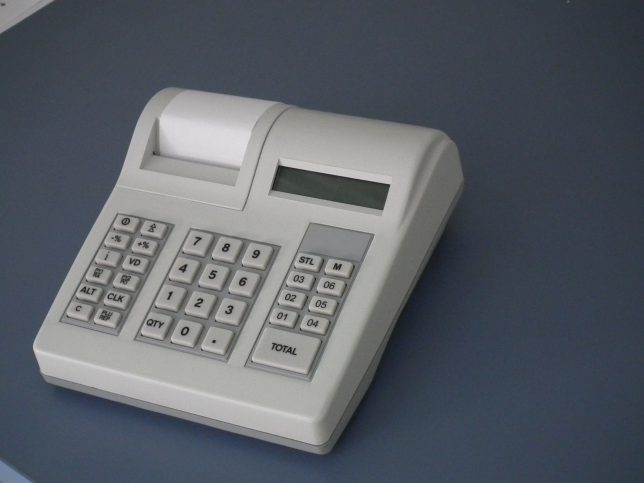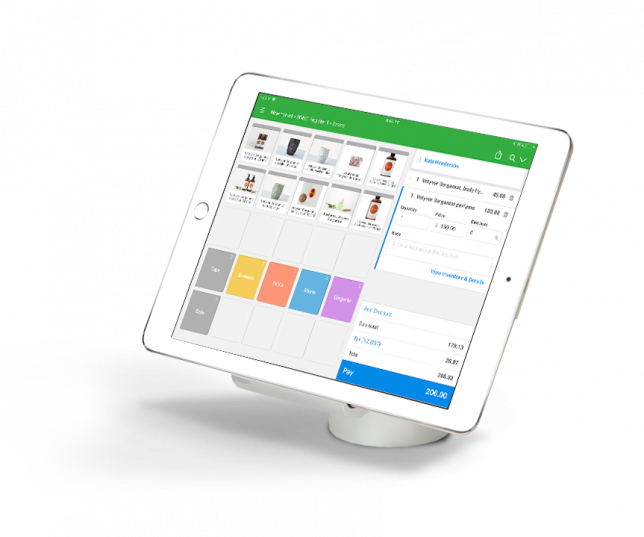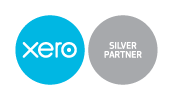Most thriving retail businesses process many transactions on a daily basis, sometimes thousands.
To handle that kind of volume, brick-and-mortar businesses need to arm themselves with the tools — both hardware and software — to keep operations running smoothly.
The heart of a retail business? The point-of-purchase, cash register or point-of-sale (POS) system. While many may use those terms interchangeably, they’re not one and the same. In fact, there are many key differences that would affect which route you go for your retail business. Let’s dive into what the traditional cash register is, what a POS system, and how they’re different — plus how you can choose which option most suits your business.
What is a cash register?

The official definition of the term “cash register” is “a business machine that usually has a money drawer, indicates the amount of each sale, and records the amount of money received.”
A cash register logs transactions that occur in your store, creating a record of the money coming in and going out. It can also calculate and add taxes, generate receipts, and offer basic sales tracking. Many major grocery stores and department stores use cash registers.
The cash register was first invented back in 1879 by whiskey, wine and cigar merchant James Ritty as a preventative measure towards employee theft. And while we’re willing to bet employee theft was a lot more rampant back then, it’s still a concern for retailers. In fact, employee theft is the second-most leading cause of shrinkage for retailers, according to data by the National Retail Federation.
Cash registers have come a long way since their early iterations. Now, we have electronic cash registers that you commonly see in restaurants. While a basic cash register is set up to handle cash transactions, newer ones have more robust options.
Generally speaking, cash registers are only a few hundred dollars in cost, but if you want additional functions like credit card readers, barcode scanners or scales, then you’ll need to invest in additional hardware.
What is a POS system?
Point-of-sale is defined as “of or relating to the place (such as a check-out counter) where an item is purchased.” Point-of-sale (also point-of-purchase or POS) systems are the mechanisms with which retailers and customers can execute purchases.
Basically, a POS is like a cash register on steroids: You can use it to administer cash transactions and do everything that a normal register would do, plus you can gain more detailed reporting on those transactions. A POS usually has a touchscreen interface that employees use to administer purchases.
A POS may be comprised of a few components:
- Touchscreen device
- Card scanner
- Chip reader
- Barcode scanner
- Computer
- Server (the Cloud)
POS systems were introduced in the 1970s, when cash registers evolved into computerized POS terminals which could perform additional functions, like credit card processing and basic inventory management. They gained popularity and became commonplace in retail environments in the ’80s and ’90s. According to Transparency Market Research, the global point-of-sale industry stood generated $36.86 billion in revenue in 2013, 34% of which claimed by retailers.
Over the years, the POS system has become more advanced. Now, many POS terminals integrate with other retail business tools, such as inventory management, accounting or warehouse management software. Some are robust enough to act as a retail management command center that handles everything sales, inventory and customer management.
POS systems are essential for multi-channel sellers, as they can track and sync data across multiple store locations, warehouses and/or fulfillment centers. They provide a centralized location for data which allows retailers to stay on top of various channels and stores from a single platform. Boston Retail Partner’s 2015 POS/Customer Engagement Benchmarking Survey supports this outlook. According to the study, there will be a 663% increase in retailers with a single commerce platform in 2019.
POS systems also have features for a number of other components to your retail business, including:
- Customer loyalty programs
- Gift cards
- Marketing
- Personalization
- Data for informed business decisions
- Automation
- Accessible from the Cloud for mobile business owners
What is a mobile POS?

Mobile point-of-sale (mPOS) are an even more recent evolution of the modern cash register. Predictably, the main difference here is that a POS is not mobile, whereas an mPOS is. This is helpful for sellers who have multiple locations or frequently sell at events or markets, but it’s also useful for single-location brick-and-mortars.
mPOS systems make associates mobile, just like your customers. So, rather than forcing a customer to make their way to the point-of-purchase, the point-of-purchase can come to them. Anytime you can reduce friction along the path to purchase, you’re helping your odds at closing the sale. In fact, more than half of UK retailers rated mPOS as the most important in-store technology for consumers in 2014. They’re also typically smaller in size than a standard POS, which supports mobility.
It’s fairly common for an mPOS to have a monthly subscription fee.
Cash register vs. POS system: What are the differences?
| Cash register vs. POS system: What are the differences? | ||
| Cash register | POS | |
| Price | Generally less expensive; $100–$800 | Around $1,200+ upfront plus $1,000/year in fees, but you typically get more bang for your buck. |
| Ease of use | Very easy to learn and train employees to use; has basic functions. | Modern POS systems are as user-friendly and intuitive as most mobile apps. But for users who need support, some vendors provide email, phone, and online customer service and training. |
| Reporting | Basic sales reporting. | Multiple reporting options; improved accuracy. Some POS systems also come with sophisticated retail analytics that track sales, inventory, customers, and more. |
| Biggest advantages | Long-lasting; reliable. | Robust, grows with your business, offers much more features and functionality. |
| Biggest drawbacks | Limited in functionality; archaic. | Typically comes with subscription fees and may require regular software updates. |
How to decide between a cash register or POS system
Choosing between a cash register, POS and mPOS for your retail business is like any other major business decision: The right answer completely depends on your unique needs. So, while there’s no one-size-fits-all answer here, there are a few considerations and questions that can guide you through the process:
- What are my biggest pain points NOW? What’s the cause of those pain points?
- Which types of payment methods does my business need to be able to accept?
- Do we need to collect tax(es) for sales? Are they all the same tax, or are there different taxes for different customers, sales, stores or products?
- How busy is my store on average?
- How many departments, categories and product SKUs do I need to track?
- How many products do we carry now? How many will we carry in the future?
- How many registers do we have or need?
- What is my current customer loyalty program?
- What does my staff like or dislike about our setup?
- How do we administer receipts to our customers?
Here’s a quick summary of the steps we’ve outlined in our POS Buyer’s Guide:
1 Define the needs of your business. Refer back to that list of questions to understand what your core needs are.
2. Take note of the required hardware. This includes barcode scanners, scales, receipt printers, etc.
3. Set a budget. If you’re choosing mPOS, you’ll likely need to account for a monthly subscription fee, whereas cash registers and traditional POS may be upfront costs with occasional maintenance expenses.
4. Audit and compare POS systems. Ask other retailers in your network or the other business tools you use (accounting, inventory management, etc.) for referrals. Check sites like Capterra, Product Hunt or Merchant Maverick to see what others like/dislike about your options.
5. See the POS in action.Watch the demo videos on the POS websites and request a live demo with your top choices so you can ask more questions to a real human.
6. Get the setup right. The best POS companies will help you through this process. To reap the most benefits from your POS, you’ll want to invest time in the beginning to setting up templates, automations, workflows and other settings.
7. Make the most of your POS system. You’ve invested the time upfront to set yourself up for success, so now it’s time to use it.
What do you use in your business to administer transactions? If you’ve upgraded to a POS, which features have you benefited from the most?

